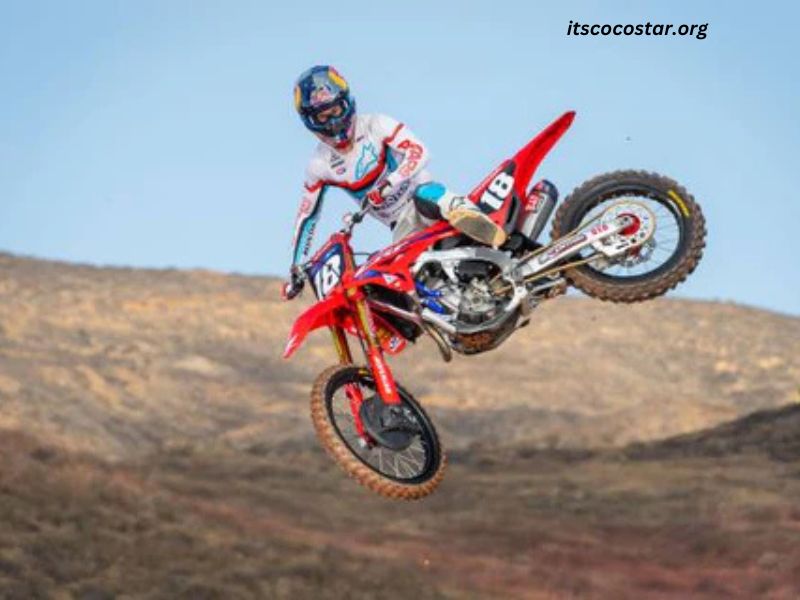Riding a dirtbike is one of the most exhilarating experiences for many enthusiasts, offering a rush of adrenaline and a sense of freedom unlike any other sport. Whether you’re cruising through dirt trails, navigating rocky landscapes, or jumping over obstacles, dirtbike riding provides an unmatched thrill. However, as exciting as it is, dirtbike riding also comes with its risks. For anyone curious about the safety aspects of dirt biking, a common question arises: How many hours of riding a dirtbike until you die? While this is a morbid question, it opens up an important conversation about dirtbike safety, risk factors, and how riders can minimize the dangers involved in the sport.
In this article, we will explore the various factors that influence safety while riding a dirtbike, examine statistics related to accidents, and provide advice on how to make dirtbike riding safer. We will also delve into the factors that contribute to the risks of dirtbike riding, and how riders can protect themselves to enjoy the sport for many hours without significant danger.
Understanding the Risks of Dirtbike Riding
Dirtbikes, by design, are lightweight, high-performance vehicles built to tackle rough terrain. This makes them suitable for off-road adventures, but also means they can be quite challenging to control, especially in difficult conditions. The primary risk factors when riding dirtbikes stem from the high speeds, uneven terrain, and the skill required to handle the bike safely. Riders often find themselves in situations where they are pushing the limits of the bike’s capabilities, and accidents can occur due to loss of control, mechanical failure, or unpredictable obstacles.
Common Types of Dirtbike Injuries
Before we dive into the specifics of how many hours of dirtbike riding may lead to fatalities, it’s important to understand the types of injuries commonly sustained in dirtbike accidents. These include:
- Head Injuries: The most serious type of injury for dirtbike riders. Traumatic brain injuries (TBIs) can occur due to falls or collisions, particularly when riders do not wear helmets.
- Spinal Injuries: Due to the nature of dirtbike riding, riders are often exposed to sudden jolts and impacts, which can cause spinal cord injuries, potentially leading to paralysis.
- Broken Bones: Fractures of the arms, legs, ribs, and collarbones are quite common, especially in high-speed crashes or falls from significant heights.
- Soft Tissue Injuries: Scrapes, bruises, and muscle strains are frequent in dirtbike accidents, often caused by losing control on rough terrain.
- Internal Injuries: These injuries occur when a rider sustains a blunt impact to the abdomen or chest, leading to potential damage to organs such as the liver, spleen, or lungs.
Mortality Rates in Dirtbike Riding
Although dirtbike riding is thrilling, the reality is that accidents do happen, and fatalities are unfortunately a part of the sport. The question of how many hours of riding a dirtbike until you die can be viewed through the lens of accident statistics. According to the National Highway Traffic Safety Administration (NHTSA) and other relevant safety organizations, dirtbike accidents account for a significant portion of off-road vehicle-related fatalities.
The fatality rate for dirtbike riding varies depending on several factors, such as the rider’s experience level, the terrain being navigated, and the presence of safety gear. While specific numbers regarding “hours until death” are difficult to pin down, studies have shown that a substantial number of deaths occur in off-road motorcycling each year. In the United States alone, hundreds of fatalities are reported annually due to dirtbike and all-terrain vehicle (ATV) accidents. This statistic emphasizes that accidents can happen at any time during a ride, making it important for riders to take precautions regardless of how many hours they spend riding.
Risk Factors That Contribute to Dirtbike Fatalities
To understand how many hours of dirtbike riding could increase the likelihood of fatal accidents, it’s important to consider the factors that contribute to accidents and fatalities:
- Speed: Riding at high speeds increases the risk of losing control of the bike, particularly on rough terrain. Riders attempting jumps or navigating steep declines can experience accidents due to high velocities.
- Rider Experience: Inexperienced riders are at a higher risk of accidents. They are more likely to make poor decisions, underestimate risks, or struggle with controlling the bike, leading to falls or crashes.
- Weather Conditions: Riding during rain, snow, or in extreme heat can alter the terrain and make it more difficult to control the dirtbike. Slippery conditions can lead to skidding, while poor visibility can make it harder to avoid obstacles.
- Terrain: The difficulty of the terrain plays a significant role in accident rates. Rocky, hilly, or heavily forested areas present a higher risk of injury. Moreover, riders who engage in competitive racing or extreme sports face an increased risk of accidents.
- Safety Gear: The lack of protective gear is a major contributing factor in dirtbike fatalities. Helmets, gloves, elbow and knee guards, and chest protectors are essential to minimizing injury risks.
- Alcohol and Drug Use: Riding under the influence significantly increases the risk of accidents. Alcohol or drugs impair judgment, reaction time, and coordination, all of which are essential for safe dirtbike riding.
- Mechanical Failures: Faulty equipment can cause accidents. Regular maintenance and checks are essential for preventing breakdowns that could lead to loss of control or crashes.
How to Make Dirtbike Riding Safer
While dirtbike riding can be dangerous, there are several steps that riders can take to significantly reduce their risk of injury and death. These measures focus on improving safety protocols, proper equipment, and maintaining a mindful attitude towards riding.
1. Wear Proper Safety Gear
This cannot be stressed enough. Wearing a helmet is the most effective way to reduce the risk of serious injury or death in the event of a crash. In addition to a helmet, consider wearing:
- Gloves: To protect hands from cuts and abrasions.
- Body Armor: A chest protector and back protector can prevent injuries to the torso.
- Knee and Elbow Pads: These protect vital joints in case of a fall.
- Protective Boots: High-quality boots provide ankle support and protect feet from debris.
2. Ride Within Your Limits
Avoid pushing yourself beyond your skill level. If you’re new to dirtbike riding, start slow, familiarize yourself with the basics, and gradually increase the difficulty of your rides. Trying to perform risky maneuvers without the proper experience can lead to accidents.
3. Maintain Your Dirtbike
Regular maintenance of your dirtbike is essential to ensure that all mechanical components are functioning properly. This includes checking the tires, brakes, suspension, and engine regularly to avoid mechanical failures that could lead to accidents.
4. Avoid Riding Under the Influence
As mentioned earlier, riding while intoxicated can be deadly. Alcohol and drugs impair your ability to control the bike and make sound decisions. Always ride sober.
5. Be Aware of Weather and Terrain
Before heading out, check the weather forecast and assess the terrain you’ll be riding on. Avoid riding on days with heavy rain or snow, as these conditions can make riding treacherous. Choose terrain that matches your skill level and experience.
6. Take Safety Courses
Many riders benefit from taking formal dirtbike safety courses, where they can learn valuable skills, including how to properly handle the bike in difficult conditions, how to react in emergencies, and basic maintenance skills.
Conclusion
The question of how many hours of riding a dirtbike it takes until you die cannot be answered precisely. Accidents can occur at any moment during a ride, and there are too many variables involved to give a definitive answer. However, by focusing on key risk factors such as riding within your skill level, wearing the proper protective gear, maintaining your bike, and riding in safe conditions, you can significantly reduce the likelihood of a fatal accident. Ultimately, the number of hours you can safely enjoy dirtbike riding is highly individual and depends on your actions, the precautions you take, and the level of care you apply to the sport.
Dirtbike riding is an incredible experience, but it comes with risks. It’s important to respect the sport and take the necessary steps to minimize danger. Riding with caution, proper preparation, and awareness will ensure that you can enjoy many hours on your dirtbike without undue harm.







